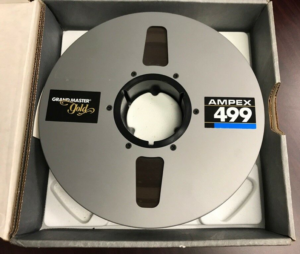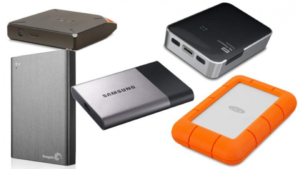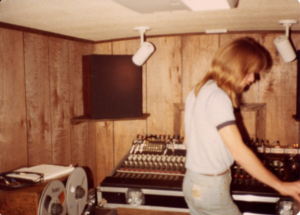Posted by Tom Morris September 6, 2019
How many of you have held a reel of 2” tape in your hands (or had one dropped on your toes)? They were heavy (about 11 ½ lbs), and expensive. They used to cost about $200 for enough 24 track tape to record about 16 ½ minutes of audio at 30 inches per second (ips). 33 minutes if you recorded at the noisier 15 ips. It wasn’t unusual for an album-length project to use thousands of dollars worth of 2” tape.
Storing them took a lot of space and care to prevent them from becoming unplayable after a few years. If you wanted to make copies of the tapes for safekeeping it was expensive. Making safety copies added thousands to the budget. The right time to make safety copies was at the end of the recording – when the budget had already been spent. In most cases that meant that the multi-track tapes were never copied. Instead, you hoped that nothing went wrong with the tapes and that the record label knew how to take care of them. It turns out that isn’t always the case, as this article highlights.
Reading about the haphazard care that some record labels take with the master recordings they own made me start thinking about the way studios, musicians and record labels are storing master recordings in the digital recording age. Maybe it would be more accurate to say – the way they are not storing recordings.
These days most recordings are done in the digital domain and stored on hard drives.
The best data out there suggest that hard drives are likely to fail after 3 to 5 years. However, it’s possible for any hard drive to fail even if it’s brand new. That’s why we always recommend that the artists we work with back up any digital data as soon as possible. Making a copy of your session to a separate hard drive significantly reduces the risk of losing all of your hard work. Today a hard drive with enough storage capacity to hold multiple album-length recording projects can be purchased for less than $100. Making safety copies of your music is cheap and fast compared to making analog tape copies, so it’s foolish to not do it!
As a case in point, I was working with a band that was recording to their own external hard drive. We had been working all day and captured some great performances. The artist didn’t want to make a copy of the data to one of our drives as they were worried about possible leaks of their new songs, but they didn’t have a backup drive of their own either. At the end of the session, they took their drive, with the only copy of their work on it, and left the studio. The drive was dropped in the studio parking lot and hit the ground. They immediately came back into the studio to check it, but unfortunately, it had been damaged by the impact and was not readable. They decided to send it off to a data recovery service. It ended up costing them more to recover some of the data than the entire original session had cost them. As Benjamin Franklin said, “An ounce of prevention is worth a pound of cure”.
So what’s the best way to store digital data?
The standard for digital data preservation in most creative communities is based on recommendations from the Library of Congress (LOC). They recommend that all digital projects should be stored in at least 2 different formats in 3 different locations. What does that mean to you?
There are 3 formats commonly used for data storage: 1) Hard drives (internal and external) 2) Digital Tape (LTO is probably the most popular format for this) 3) Cloud storage or AML storage (Automated Media Library). For cost reasons, the two formats that are more feasible for most artists are hard drives and cloud storage.
Make sure to have at least 2 different hard drives to store your project data on and keep them in different places. (USB Flash drives are generally not a good choice for long term back up as they are more prone to environmental damage and subsequent failure than a good external drive.) Keep in mind that even the best hard drives are likely to fail within 5 years, so plan to purchase new hard drives every few years and copy your projects to the new drives to keep them safe.
The second format and possible 3rd location could be any one of several cloud storage options. Currently, Amazon, Apple, Backblaze, Dropbox, Google, and Microsoft all offer cloud storage options that may work for you. These are good options for data security but will likely involve an annual storage fee that depends on the size of the recording project.
At Morrisound, we can and do offer to keep a temporary backup copy of your project data to give you some extra data safety while you make your long term backup plans. Recording studios, in general, do not have the capacity to offer long term storage. Most will offer to retain a copy of your project for a limited time. Long term storage is the responsibility of the artist and/or their record label, not the studio.
Conclusion:
If you’re working on a recording project you know how much time and energy you’ve put into it. Don’t take unnecessary risks with your hard work. Invest a little time and money to safeguard your data by making and maintaining backup copies! Copy your recording sessions to at least 2 different hard drives that you keep in different buildings (keep one at home and leave one with another band member, a Safe Deposit box or your Mom) and find a cloud service you can afford to save your final masters.




